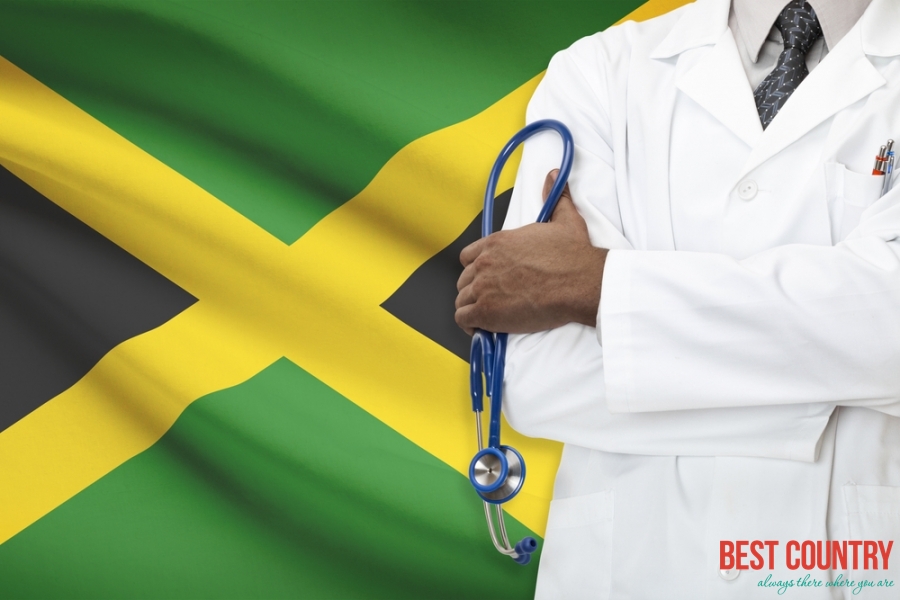Jamaica Healthcare

In response to this situation, the Government is engaged in health sector reform with the assistance of several technical cooperation agencies. Major elements of the reform are: decentralisation, integration of services, promotion of quality assurance standards, rational resource allocation, human resource development, greater cost sharing, increased efficiency, fostering public-private partnerships and equity.
It is recognised that health services delivery and management must be transformed to better match the changing epidemiological conditions and the demands of health care consumers and providers, as well as to make efficient and effective use of available resources.
In 1997, the Government proposed a National Health Insurance plan to offer coverage for a defined set or package of hospital, laboratory, diagnostic and pharmacy services.
Over the past decade, there has been significant growth in the private healthcare sector. It is estimated that 75% of ambulatory care of a curative nature is delivered in the private sector, while most hospital and preventive services are provided largely in the public sector. In 1995, there were nine small private hospitals in Jamaica.
Primary care remains a top priority with the Government.
In 1996, the Ministry of Health operated 364 primary healthcare centres, which operate at five levels of service. The higher the level of service, the wider the catchment area of the clinic. Use of primary healthcare centres for curative care, which represents 46% of the workload, is decreasing despite an expansion in the number of facilities and range of service benefits. Maternal and child health services, family planning, and dental services comprise the remaining 54% of services.
In 1995, curative visits to primary healthcare centres totalled 780,520.
The public secondary and tertiary care system comprises a total of 23 acute care hospitals: six tertiary speciality hospitals, five secondary care hospitals, nine small community hospitals, and three hospitals specialising in chronic care. Total hospital discharges (111,002), average occupancy rate (66.6%), deliveries (36,059), outpatient visits (333,409), and casualty visits (389,855) for 1995 reflect lower use despite service expansion.
It is estimated that public hospitals are responsible for 95 % of inpatient days and 65% of costs. While the leading reasons for admission relate to normal and complicated maternity cases, trauma cases and chronic diseases account for the largest expenditures.
The number of health personnel in the public sector increased from 4,220 in 1991 to 4,968 in 1995, approximately 18%. There were 417 physicians and 1,836 registered nurses in 1995.
The Government is the primary sponsor and trainer of health workers. Much training is provided overseas and funded through international cooperation.
In addition to strengthening existing human resources and training facilities, new categories of health workers need to be developed to coincide with different approaches to managing resources and delivering care.
Inadequate financial remuneration, benefits, and poor incentives contribute to a poor distribution of personnel relative to human resource needs.
The Jamaican health sector is estimated to have had about $348 million in total expenditures in 1995. Depending on the source, total health expenditures consume between 5% and 8.9 % of the GDP. Public expenditures are estimated to represent 35% of total health expenditures, indicating a gradual shift toward the private sector over the past decade. This is most applicable to ambulatory care, of which the private sector provides 75%. 52% of drug expenditures are in the private sector.
Public expenditures on health represent about 6% of the Government budget. The Government provides 95% of the hospital care and funds 65% of this care.
Taxation revenue provides nearly 90% of the Ministry of Health’s budget.
In recent years, the Ministry of Health has been chronically underfunded, a problem compounded by generally unfavourable fluctuations in the Jamaican dollar. Substantial funding of services and other activities comes from extra budgetary sources, such as bilateral and multilateral loans and grants.
With the growth of the private sector, the public now finances about 35% of the national health system. In the 1996-1997 fiscal year, actual public expenditures are estimated to have totalled $157 million.
While compensation and secondary care continue to absorb the largest part of the Ministry of Health budget, trends are improving for line item categories and programs. Such expenditures decreased to 58% and 51% respectively. Primary care is allocated about 18% of the recurrent budget. Financing the maintenance of plant and equipment, currently allocated less than 1% of the health budget, continues to be a problem.
On average, hospitals collect fees equal to about 5%-10 % of their expenses. It is recognised that other financing sources must be developed, such as insurance programs and public-private partnerships. Revenue from all sources average 2% of total Ministry of Health expenses.